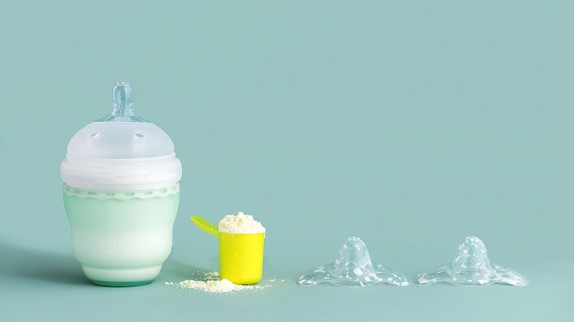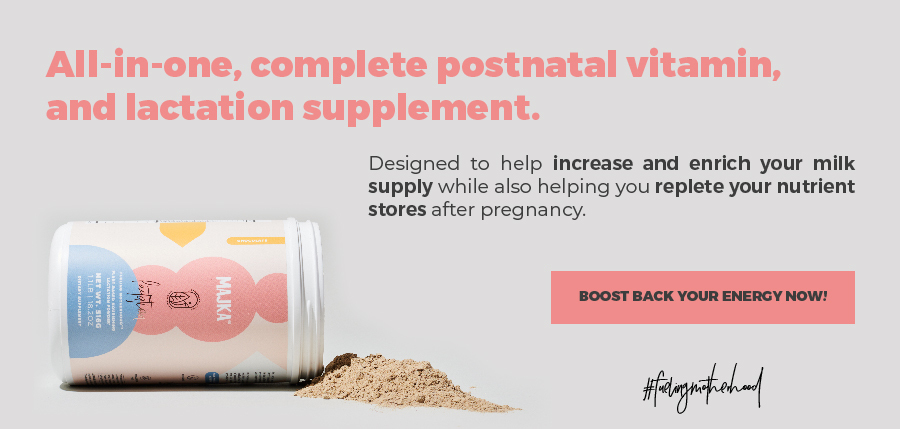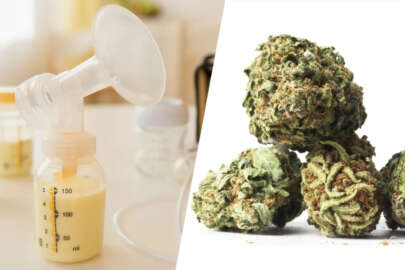
Having a baby is not exactly an easy task, and dietary decisions are not excluded from this. Deciding if you should mix breastfeeding and formula can put some pressure on you, no matter if the reason behind this choice you are making is due to your own milk supply, medical indications, or a personal preference based on your lifestyle.
We strongly encourage you to try to exclusively provide breastmilk to your child, at least during their first 6 months of life as breast milk is the ideal food for them: it is the safest and cleanest source of nutrition for your baby, and it is composed of elements that will protect them against some of the most common illnesses, but consider that mixing breastfeeding and formula is completely safe and should not suppose any risk for your baby. Remember breastfeeding does not have to be “all or nothing”, any amount of breastmilk is beneficial and finding the combination that works best for the dyad is important. 50/50 is ok, 90/10 or even 10/90 is ok.
When prepared as directed, infant formula can be an ally to keep your baby healthy, as it will support their dietary needs, but consider that commercial formulas do not contain many nutrients found in breast milk, which can help them grow stronger and support their immune system.
To support your combined breastfeeding and formula feeding journey, we’ve gathered some information to guide you with insights that you can put into consideration before taking action:
First of all, the basics
The combination of breastfeeding and formula is called supplementation, whether breast milk is given directly by nursing or by bottle feeding with previously pumped milk that could be mixed with formula or some breastfeeding sessions combined with some expressed breast milk in a bottle or some formula bottles, even mixed breastmilk/formula bottles or supplementing with formula at the breast (Supplemental Nursing System – SNS).
Mothers around the world try it for different reasons, which include:
- Medical issues: Preemies or babies with certain medical conditions may have problems latching or any other conditions that prevent them from getting the nourishment they need; adding formula could be an option for kids that are not feeding well at the breast or aren’t gaining weight adequately.
- Low milk supply: Supplementing with donor milk or formula might be the best when a mother has supply concerns, whether it is temporary or chronic.
- Work-life balance: Returning to work affects different aspects of a mother’s breastfeeding routine, from time availability to breastfeed to lower milk supply due to stress.
- Personal choice: Maybe a mom’s partner wants to participate in the feeding process, you have more than one baby or just need a break, breastfeeding and formula can be a comfortable mix… any reason is a valid reason.
What to expect
If you have exclusively breastfed your baby and started adding formula to their diet, you could notice new patterns, which are a natural aspect of this transition. Here are some of the changes you might notice while you and your baby are adjusting to the new routine:
- Longer spaces between feeds: Babies digest breast milk easier and faster than baby formula, for this reason, they may not seem as hungry as they normally are when exclusively breastfeeding, since formula takes longer to digest.
- Stool characteristics: Digestion will also play an important role in the frequency your baby poops, as well as the color and consistency of their stools. If your baby has trouble pooping or diarrhea appears, talk to your pediatrician to take action right away.
- Refusal to eat: A variety of things lead to bottle refusal. Adding pumped breast milk to the formula may help many babies who prefer the bottle over the breast, but often if they are refusing a bottle it is probably due to other reasons. Try contacting your Lactation Consultant or pediatrician if your baby refuses the bottle or breast three feedings in a row.
Introducing formula
It can take several weeks for you and your baby to feel happy and confident with the combination of both breastfeeding and bottle feeding, but these tips might be helpful for a smooth transition from exclusive breastfeeding to supplementation:
- Breastfeeding over bottle feeding: Always keep in mind the benefits that breast milk has over baby formula. If you see that your baby is getting hungry, try to feed them from your breast first. If a bottle is being used in addition to breastfeeding, babies can get used to bottle feeding, not necessarily the formula itself. To transition best between breast and bottle, remember to use a slow flow bottle and paced bottle feeding.
- Mixing safety: As we stated before, mixing breast milk and formula in the same bottle is perfectly safe, but never combine your breast milk with unmixed powdered or concentrated formula, always following the product’s directions and using clean water. Talk to an IBCLC or pediatrician for information on how many oz of each is needed when combination feeding.
- One bottle at a time: Introduce a bottle of formula a couple of hours after breastfeeding to make sure your little one is happy, relaxed, and hungry enough to try it. Add formula slowly to avoid gastrointestinal issues.
- Don’t stop pumping right away: When you add formula to your feeding routine, keep pumping your milk, as you can store it and use it for bottle feeding. This will also help you avoid supply drops and the risk of breast engorgement and blocked milk ducts. Get help on ideas to wean slowly from pumping if this is something you are doing.
If you’re struggling with breastfeeding and are considering supplementing your kid’s nutrition with formula, ask your lactation consultant or family doctor for guidance, as they are going to know what could be the best option for you; as long as your baby is getting an adequate nutrition, any choice you decide to make is the right one. We hope the information in this article helped you clear some doubts; remember to follow Breastfeeding 101 to keep up with our new content to guide you through your lactation process.
For more insights on mixing breastfeeding and formula, feel free to consult some of these resources:
Breastfeeding | World Health Organization
Breastfeeding vs formula feeding | Nemours Children’s Health
Breastfeeding and going back to work | NHS
Formula Supplementation of Breastfed Infants: Helpful or Hazardous? | Sage Journals
How to Supplement Your Breastfed Baby’s Feedings with Formula | Healthline
Mixed feeding: combining breastfeeding and bottle feeding | NCT
Annie Rueb






